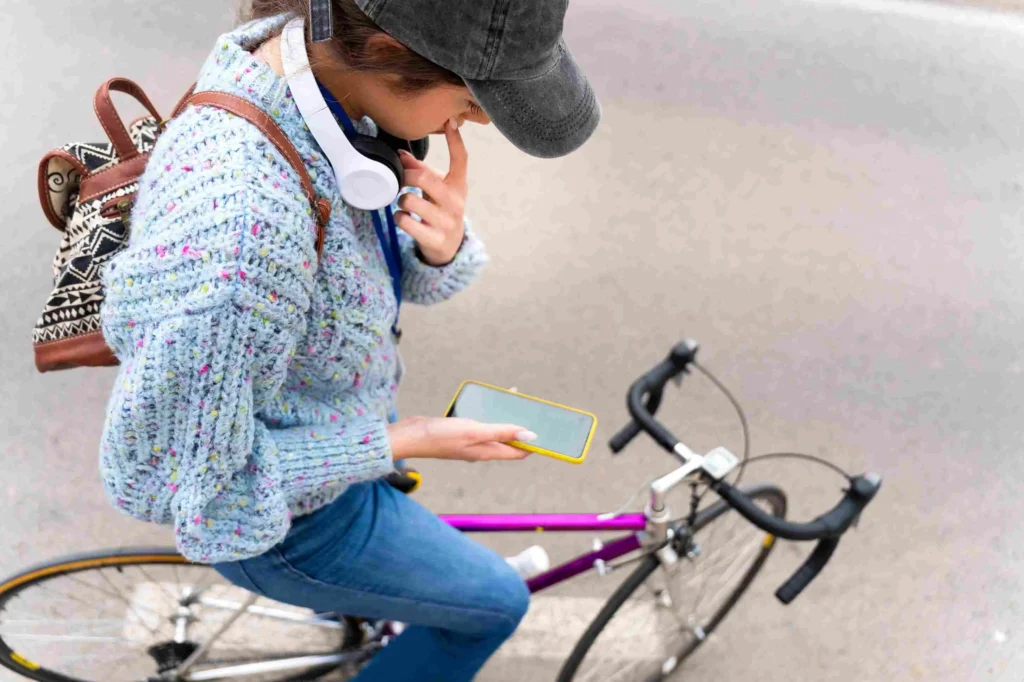June 3 is World Bicycle Day, and that makes it the perfect time to discuss the intersection of fitness, fun, and tech. Whether you’re navigating unfamiliar streets, catching up on work, or keeping in touch with friends, having internet access while biking opens up a world of possibilities.
There are a lot of ways to stay connected, even when you’re on the go, and this helpful guide will show you how. We’re talking tips on mobile hotspots, smart bike gadgets, and hands-free tech. For the weekend warriors and the daily commuters, this guide will help you stay online even while cycling.
Why Cyclists Need Internet Access
Being able to access the internet while biking isn’t just a luxury – it’s becoming an essential part of urban cycling. Here’s why:
- Navigation: Modern GPS apps make navigating city streets safer and more efficient. Real-time traffic updates, rerouting for detours, and sharing routes with friends are all possible when you’re connected.
- Communication: Whether you’re checking in with family, sending work emails, or catching up with friends, staying connected ensures you’re never out of reach.
- Safety: In case of an emergency, being able to send your location or call for help can be life-saving. Real-time tracking apps are also useful for ensuring loved ones can track your ride.
- Entertainment/Productivity: Music, podcasts, or even video calls can make long rides more enjoyable or productive. Streaming services require stable internet access, which you can easily get with the right setup.
Mobile Hotspot Options for Cyclists
One of the simplest ways to stay connected while biking is by using a mobile hotspot. Here are a few options to consider:
Using Your Smartphone as a Hotspot
Most modern smartphones have the ability to function as mobile hotspots. With just a few taps, you can turn your phone into a Wi-Fi hub for other devices, like your bike GPS or Bluetooth headphones.
However, keep in mind:
- Your mobile data usage can increase, especially if you’re streaming music or using data-heavy apps.
- Battery life may drain quickly when your phone is functioning as a hotspot, so it may be necessary to invest in a portable charger.
Best Portable Wi-Fi Devices for Biking
If you’re looking for more robust internet access, portable Wi-Fi routers designed for mobile use can be a game-changer. These portable hotspots can be placed in your bag and provide internet access for multiple devices at once.
Look for a device with a long-lasting battery, preferably one that can run for at least eight hours on a single charge.
Best Smart Bike Gadgets for Internet Connectivity
Cycling technology has come a long way, and there are now gadgets designed to enhance your internet experience while on the go.
Smart Helmets with Bluetooth and Wi-Fi
Cycling helmets equipped with Bluetooth and Wi-Fi capabilities allow you to connect to your phone or other devices, offering hands-free calling, navigation, and music streaming. The best models will combine safety features with internet access.
GPS Devices with LTE
Cyclists who prefer not to use their smartphones for navigation can opt for GPS devices with built-in LTE. These devices provide real-time data, map routing, and turn-by-turn navigation, all while staying connected to the web.
Handlebar Mounts for Smartphones
For those who prefer using their phone’s GPS apps, a handlebar mount can securely hold your device while you ride. This setup keeps your phone visible and accessible without distracting you from the road.
Hands-Free Internet Usage While Riding
Safety is key when biking, and you never want to sacrifice that just for the sake of using a neat new gadget. Here’s how you can stay connected without taking your eyes off the road:
Voice-Activated Assistants
Smartphones come with built-in voice assistants like Siri (Apple) or Google Assistant (Android), allowing you to make calls, send texts, or navigate without touching your phone. Simply activate the assistant with a voice command and you can access most of your apps hands-free.
Bone-Conduction Headphones
Bone-conduction headphones are an excellent solution for listening to music or podcasts while still being able to hear your surroundings. Unlike traditional earbuds, bone-conduction headphones rest on your cheekbones, transmitting sound through vibrations, keeping your ears open to ambient noise, which is crucial for safety.
If You Need to Browse, Get Off the Road
Okay, look, we’re not your parents, but we do care about you (and your mother would be so disappointed if she caught you texting and driving). If you’re not using voice commands to use your phone, the safest thing to do is just pull over – obviously, where it’s safe to do so. Distractions like texting or scrolling can endanger not only you but others on the road. So be mindful and make your mother proud.
Urban Connectivity Challenges (and Solutions)
While having internet access on the go is convenient, there are some challenges when biking around town:
Signal Strength in Dense Areas
In cities with high-rise buildings or crowded areas, you may encounter weaker signal strength. In these cases, mobile hotspots or devices with strong LTE support are essential to maintain a stable connection.
Battery Life Management
Running apps and streaming services on your phone or bike tech can drain the battery quickly. Carrying a portable charger or power bank is a must if you plan to stay online for extended rides.
Weatherproof Gear for Electronics
Rain or snow can disrupt your connectivity if your gadgets aren’t protected. It costs more, but it may be worth it to invest in weatherproof phone cases, bike-mounted chargers, and water-resistant bags to keep your tech safe in all conditions.
Conclusion
Staying connected while biking around town isn’t just about convenience – it’s about improving safety, enhancing the cycling experience, and staying productive on the go. There are plenty of options to help you maintain a seamless internet connection while riding, so get out there this World Bicycle Day and have fun!

